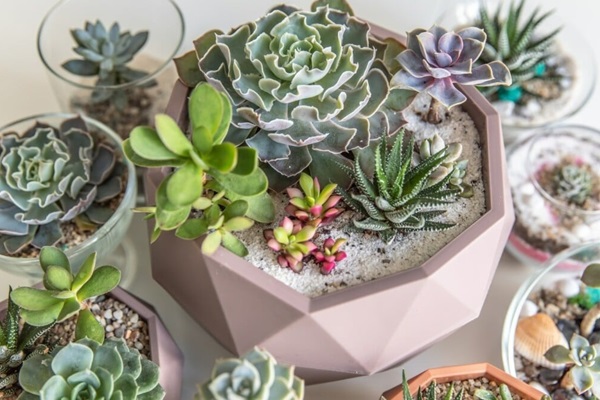If you want your indoor space to look good, adding Succulent plants is the best way to add beauty to your house. These Succulent plants are stunningly beautiful and also easy to maintain. They not only add beauty to the house but also help to reduce your stress and make you fresh and productive.
Due to their striking appearance, Succulents have surged in popularity as indoor plants. In addition to being aesthetically pleasing, succulents offer health and productivity benefits. Choose from a variety of plants to find the perfect fit for your environment.
These plants come in all textures, sizes, and shapes and are easy to grow both indoors as houseplants and outdoors in your garden. Similarly, Succulents also can store water in their leaves and stems, making them perfect for those who may not have a green thumb or who may not have the time to care for plants daily.
Succulents are trendy and decorative in any home, so if you are planning to brighten your indoor space all year, then here is a list of Succulents you may add to your indoor space.
Panda Plant
Using Panda Plant (Kalanchoe tomentosa) for indoor space decoration can add a touch of charm and texture to your home or office environment. You can place Panda Plant in a decorative pot and showcase it as a standalone statement piece on a tabletop, shelf, or windowsill. It helps to add visual interest to any space because of the unique texture of its fuzzy leaves.
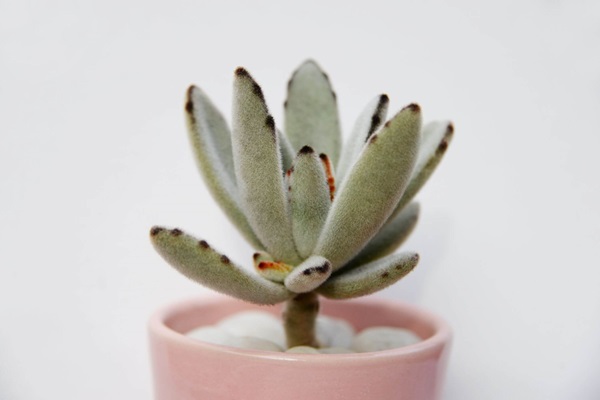
Similarly, you can also combine Panda Plant with other compatible succulents to create eye-catching arrangements. You can create a dynamic display by choosing plants with contrasting colors, shapes, and textures. This 2 feet tall and wide beautiful plant just needs bright light; and a well-draining cacti or succulent mix to care for.
Aloe Vera
Aloe Vera has been a stylish and modern plant that complements your indoor decor theme. it is not only aesthetically pleasing for indoor space decoration but also offers various health benefits. You can use pots made of materials like ceramic, terracotta, or glass for a contemporary look.

You can place Aloe Vera as a decorative accent in your living room or on the windowsill to take advantage of natural light while adding a touch of greenery to your indoor space.
Snake Plant
Snake plant is another best Succulent to add to your indoor space as it does well in low-light conditions. It does not bloom regularly but every couple of years, they may offer a showing of fragrant, tubular white flowers which makes them stunning and add beauty to your indoor space.

You can locate the snake plant as a statement piece on the floor of your living room, dining area, or entryway. Its striking architectural leaves will draw attention and add visual interest to the space.
Gollum Jade
Gollum Jade is a unique succulent with tubular, elongated leaves that give it a distinctive appearance. Incorporate Gollum Jade into your indoor space into succulent arrangements or gardens to create visually interesting displays.
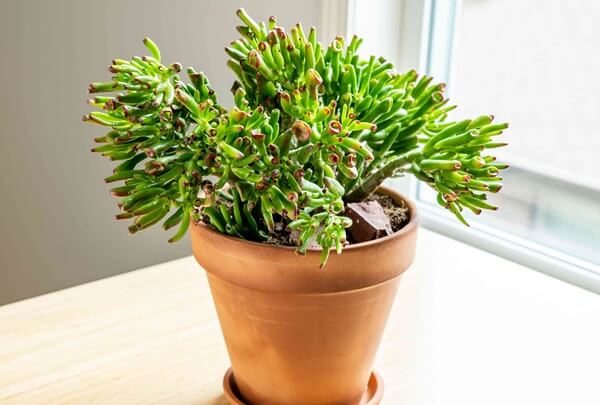
You can plant Gollum Jade in a terrarium or glass container filled with sand, rocks, or decorative pebbles. Its unusual leaf shape adds texture and intrigue to terrarium landscapes, making it a captivating centerpiece for indoor decor. It needs bright, indirect sunlight to thrive.
There is also a belief that the Gollum jade plant is supposed to bring good luck and prosperity and is also known as a money plant.
Hens-and-Chicks
Hens-and-Chicks is another beautiful Succulent plant that makes charming additions to living walls, vertical gardens, or mixed succulent arrangements. This plant can thrive in full sun to partial shade.
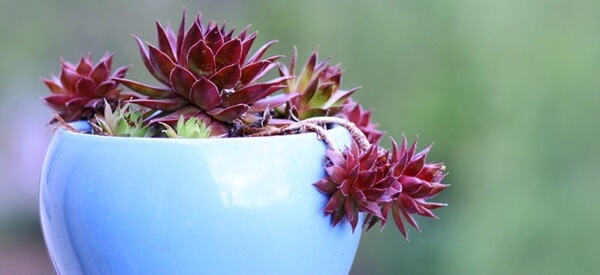
Symbolizing growth and vitality, hens and chicks represent the ‘Wood’ element. Like wood, they suggest upward and outward movement, indicating abundance, development, and the energizing force of life.
Zebra Haworthia
Zebra Haworthia is another beautiful indoor succulent that grows approximately 2-8 inches and sprouts bright yellow flowers. Its leaves look like an aloe vera plant but the distinguishing factor is dark green with horizontal white stripes or tubercles, resembling the stripes of a zebra.
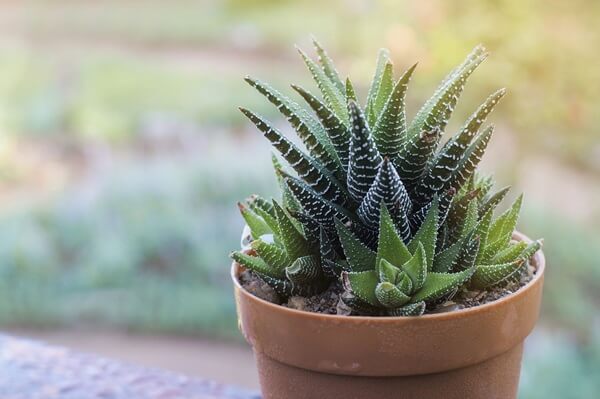
It remains relatively small, making it suitable for containers, and terrariums, and fits anywhere in your indoor space. Similarly, you can place it on your shoe rack to spruce it up or add it to your living room mantle.
Stone Crop
Stonecrop plants, also known as Sedum, are another excellent choice for indoor space decoration due to their unique appearance, low maintenance requirements, and versatility.
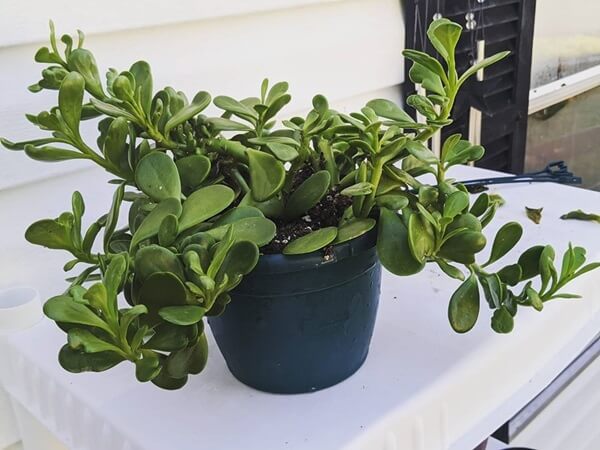
These plants can be found in different colors including pink, white, purple, yellow, and even red. You can add this plant indoors or even on your balcony or terrace if you are creating a small green and artsy space.
Burro’s Tail
Well, this is another beautiful plant and looks great on office tables and kitchen tops. The foliage is excellent, with leaves that come in either a pretty grey or a bright green.
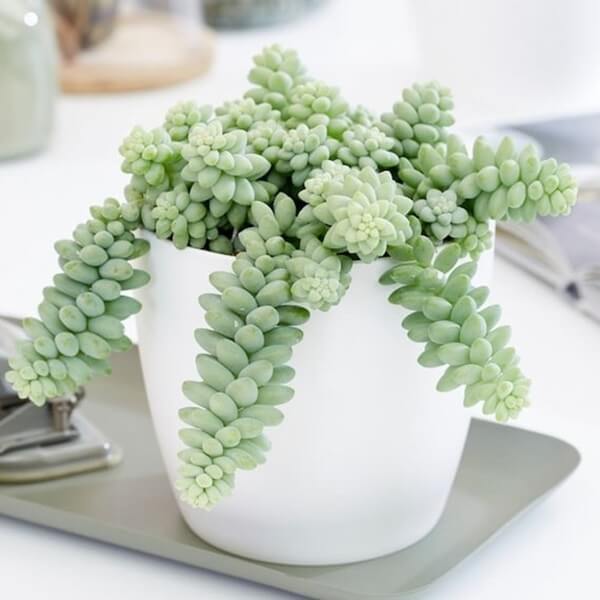
The Burro’s Tail, also known as Sedum Morganianum, is one of the easiest succulent plants to grow. All you need to do is take one leaf, plant it in a new pot, and wait for it to grow.
Kalanchoe
Kalanchoe is a genus of flowering succulent plants that belong to the Crassulaceae family. This plant is best known for its vibrant flowers, attractive foliage, and ease of care, making it a popular choice for indoor and outdoor decoration. Kalanchoe plants generally prefer bright, indirect light and need moderate water.
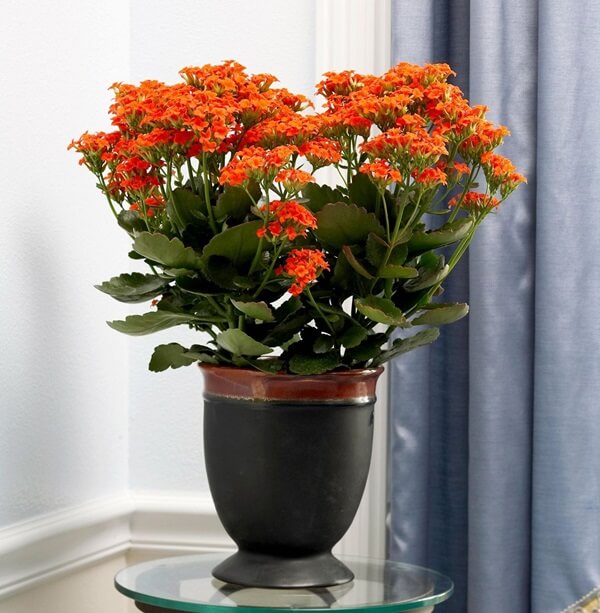
You can easily propagate Kalanchoe from stem or leaf cuttings. Simply take a cutting from a healthy plant, allow it to callus for a few days, then plant it in well-draining soil. Keep the soil lightly moist until roots develop, then treat it like a mature plant.
Bear’s paw
Bear’s paw is a cute and unique succulent plant that is popular for its distinctive fuzzy leaves that resemble the paw of a bear. It has thick, fleshy leaves covered in soft, velvety hairs, giving them a fuzzy texture. Similarly, it has a slightly rounded shape with toothed edges.
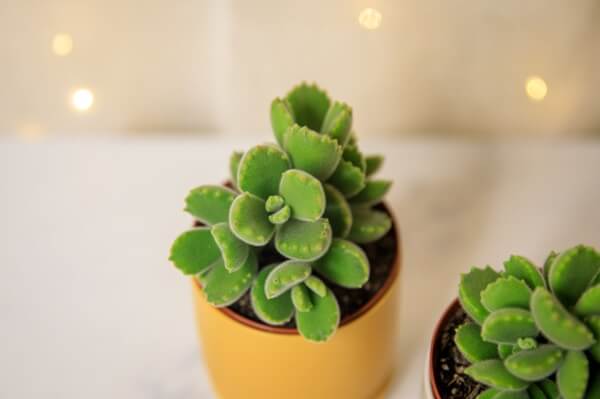
It can be propagated easily from stem or leaf cuttings. As this plant has a unique appearance and texture, adding it to your indoor space makes it more attractive. You can place it on tabletops, shelves, windowsills, and other indoor spaces.
White Fairy Washboard
The White Fairy Washboard is a charming and unique succulent that adds interest and texture to indoor succulent collections, terrariums, and mixed plantings.
With its compact growth habit and easy care requirements, it’s an excellent choice for both beginner and experienced succulent enthusiasts.
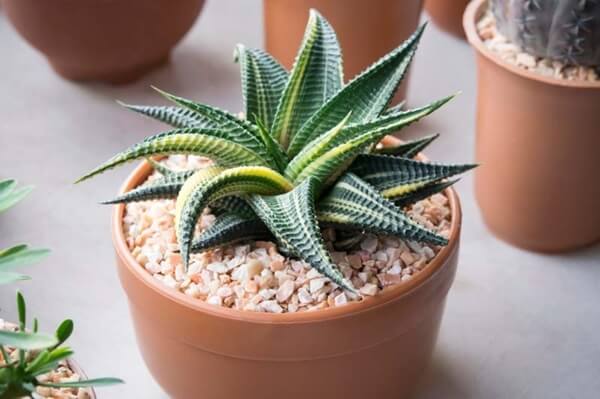
You can incorporate the White Fairy Washboard into your indoor decor by placing it on tabletops, shelves, windowsills, or desks. You can also combine it with other succulents or decorative elements to create visually appealing arrangements.
FAQ
1) Which succulents thrive indoors?
Succulents that thrive indoors include varieties like Echeveria, Haworthia, Aloe, Jade Plant (Crassula ovata), and Snake Plant (Sansevieria). These plants tolerate low light conditions well.
2) How can we propagate succulents?
Succulents can be propagated through various methods, including leaf cuttings, stem cuttings, and offsets (baby plants that form at the base of the parent plant).
3) How often do we have to water indoor succulents?
Succulents prefer infrequent watering compared to other houseplants. Allow the soil to dry out completely between waterings, and then water thoroughly until water drains out from the bottom of the pot.
